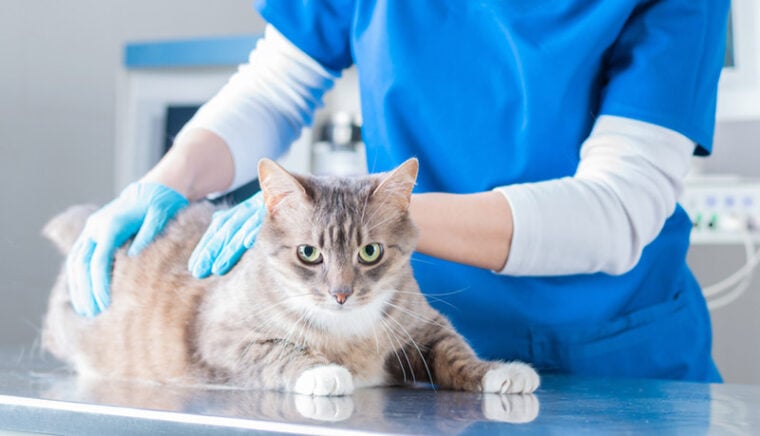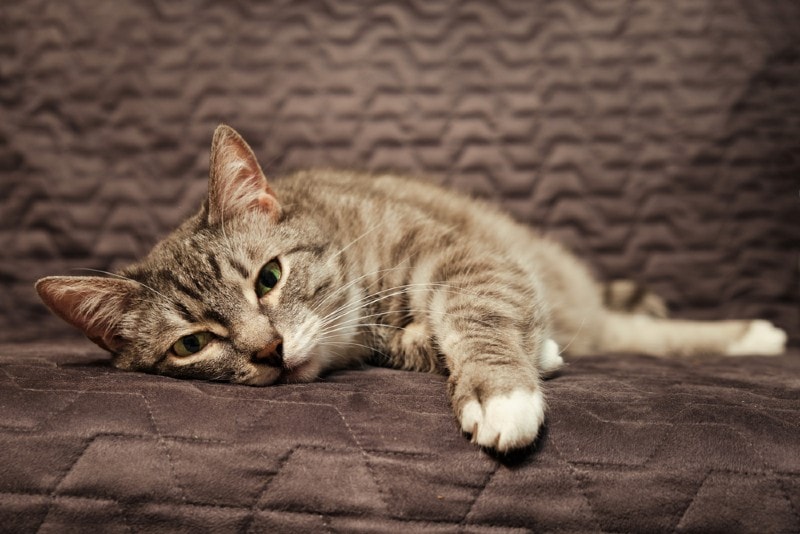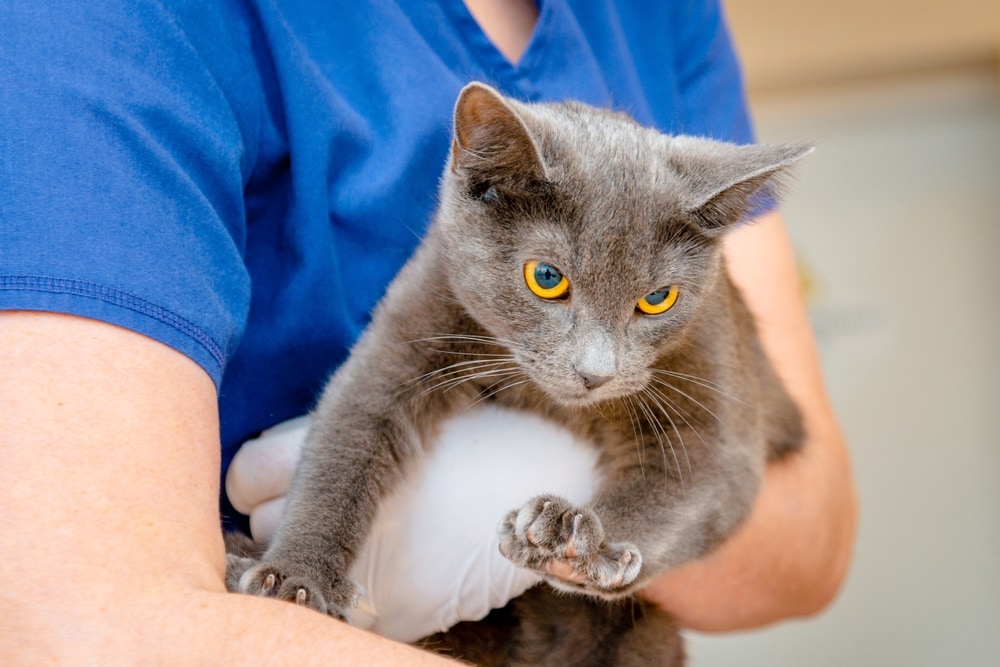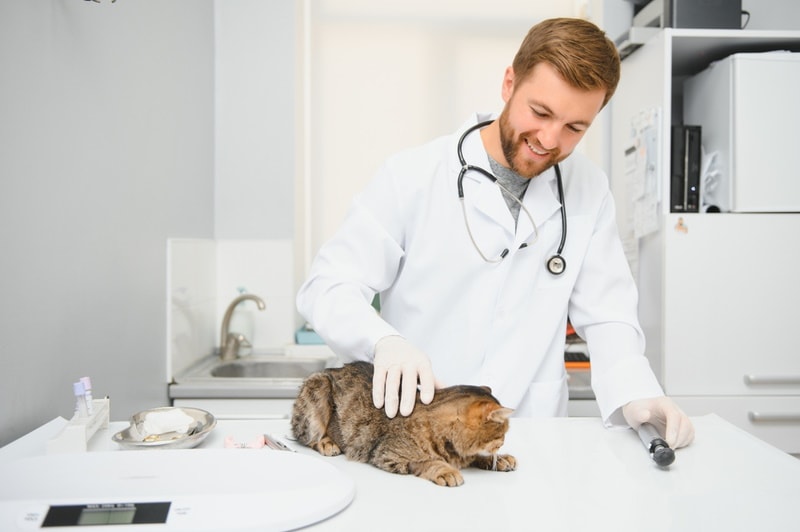
A cat’s nervous system is similar to a human’s in both form and function. This complex network is responsible for sending messages and sensory information between the brain and the body. It is divided into two main parts: the central nervous system and the peripheral nervous system. The former is composed of the brain and spinal cord, while the latter includes the nerves found throughout the rest of the body.
Cats can develop neurological disorders from various causes, including genetic and birth defects, infection and inflammation, toxins, injury, cancer, nutritional deficiencies, metabolic disorders, and degenerative diseases. Nervous system disorders may be more common due to breed or sex or occur more frequently at a certain age.
Let’s look at the common signs indicating that your cat may have a neurological disorder.
The 11 Vet-Explained Signs Of Neurological Disorders in Cats
1. Weakness
Signs of weakness in cats may include a wobbly or uncoordinated gait, difficulty getting up or being unable to get up, inability to jump up on furniture or climb stairs, sitting with their legs splayed outward, walking on the entire foot instead of just the toes, lowered hind end, pooping and peeing outside of the litter box, and dragging limbs.

2. Paralysis
Signs of paralysis may include a wobbly or uncoordinated gait, dragging limbs, lack of movement in parts of the body, inability to get up, falling down, lack of sensation in limbs, urinary or fecal incontinence, constipation, difficulty breathing, and cold limbs.
3. Lack of Coordination
Signs of coordination issues in cats include having a wobbly or drunken gait, not knowing where their legs are positioned (ataxia), circling to one side, falling or rolling over, swaying, having a tilted head, being clumsy, leaning, stumbling, and exhibiting jerky or exaggerated movements.

4. Circling
Signs of circling include incoordination, circling to one side, walking in circles, falling or rolling to one side, head tilt, rapid darting of the eyes back and forth (nystagmus), and nausea and/or vomiting.
5. Pain
Signs of pain include frequent and/or ongoing vocalizations (meowing, yowling, etc.); hiding; lack of appetite; poor grooming; fewer social interactions; litterbox accidents; tail flicking; limping; reluctance to be petted or picked up; lethargy; decreased energy and activity; squinty or wide eyes; biting or licking a specific area on their body (self-mutilation); posture changes, such as a hunched appearance; and aggression.

6. Seizures
Signs of seizures in cats include twitching of the face or eyelids, convulsions, rigidity, paddling limbs, jerky movements, falling over, disorientation, loss of consciousness, excessive drooling, loud vocalizations, aggressiveness, loss of bowel or bladder function, excessive tiredness or excitement, pacing, depression. Brain tumors are more common in older cats and can present as seizures. A primary seizure disorder (epilepsy) is less common in cats than in dogs.
7. Tremors
Tremors may present in cats as limb, head, or body shaking; twitching or shivering; involuntary muscle movements that alternate between contraction and relaxation; spasms; and no loss of consciousness (as with seizures).

8. Behavioral Changes
Cats with a neurological disorder may have behavioral changes, such as decreased or increased activity; sudden aggression; lethargy; depression; sleeping more or less; hiding; fewer interactions with family members; poor grooming; peeing or pooping outside of the litter box; more or fewer vocalizations; disorientation; confusion; changes to feeding habits; anxiety; coma; and unresponsiveness.
9. Dizziness
Cats with dizziness may have incoordination; circling to one side; falling over; rolling to one side; rapid, jerky back-and-forth eye movements (nystagmus); head tilted to one side; disorientation; and nausea and vomiting.

10. Fecal or Urinary Incontinence
Cats with neurological disorders may have difficulty controlling their bladder or bowel functions. This may present as incontinence and/or peeing or pooping outside of the litterbox or house soiling. Alternatively, cats with spinal issues can also have constipation or the inability to urinate on their own.
11. Sudden Blindness
Cats with blindness may appear confused and disoriented and may exhibit behavioral changes, bump into objects, be clumsy, trip over things, have uneven pupil size or wide pupils, and walk more cautiously or closer to the ground.
Conclusion
The nervous system plays an important role in how cats sense and respond to their environment. Just like other body systems, the nervous system can suffer from disorders that alter the way that it functions. Cats can inherit or be born with genetic disorders, or they can suffer traumatic injuries to their brain and spinal cords, which causes neurological dysfunction. Toxins, infection, nutritional deficiencies, metabolic disorders, tumors, and even old age can contribute to neurological disorders. Many signs can be nonspecific and can indicate other problems, so if you notice any changes to your cat, whether physical or behavioral, please contact your veterinarian as soon as possible.
Featured Image Credit: Andy Gin, Shutterstock








